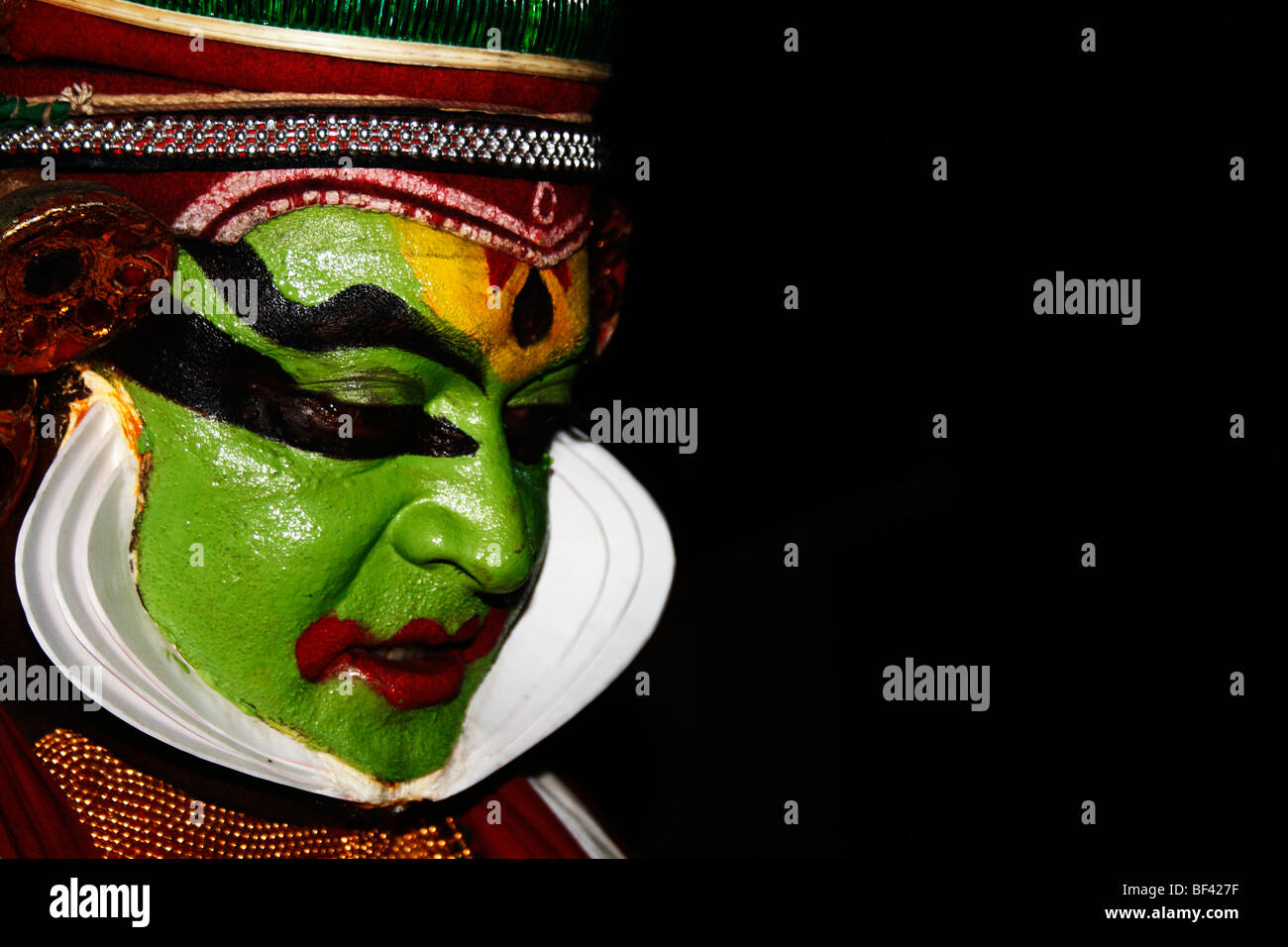side view,face,kathakali,drama,stage show,face,expressions,colored face,dance ,play,solo,art,indian

Image details
Contributor:
Vishnu Sankar / Alamy Stock PhotoImage ID:
BF427FFile size:
50.2 MB (1.5 MB Compressed download)Releases:
Model - no | Property - noDo I need a release?Dimensions:
5130 x 3420 px | 43.4 x 29 cm | 17.1 x 11.4 inches | 300dpiDate taken:
24 September 2009Location:
TrivandrumMore information:
There are 24 basic mudras -- the permutation and combination of which would add up a chunk of the hand gestures in vogue today. Each can again can be classified into 'Samaana-mudras'(one mudra symbolising two entities) or misra-mudras (both the hands are used to show these mudras). The mudras are a form of sign language used to tell the story. The main facial expressions of a Kathakali artist are the 'navarasams' (Navarasas in anglicised form) (literal translation: Nine Tastes, but more loosely translated as nine feelings or expressions) which are Sringaram (amour), Hasyam (ridicule, humour), Bhayanakam (fear), Karunam (pathos), Roudram (anger, wrath), Veeram (valour), Beebhatsam (disgust), Adbhutam (wonder, amazement), Shantam (tranquility, peace). The link at the end of the page gives more details on Navarasas. A performer applying makeup A Kathakali performer as Krishna. A female characterOne of the most interesting aspects of Kathakali is its elaborate make-up code. Most often, the make-up can be classified into five basic sets namely Pachcha, Kathi, Kari, Thaadi, and Minukku. The differences between these sets lie in the predominant colours that are applied on the face. Pachcha (meaning green) has green as the dominant colour and is used to portray noble male characters who are said to have a mixture of "Satvik" (pious) and "Rajasik" (kingly) nature. Rajasik characters having an evil streak ("tamasic"= evil) -- all the same they are anti-heroes in the play (such as the demon king Ravana) -- and portrayed with streaks of red in a green-painted face. Excessively evil characters such as demons (totally tamasic) have a predominantly red make-up and a red beard. They are called Chuvanna Thaadi (Red Beard). Tamasic characters such as uncivilised hunters and woodsmen are represented with a predominantly black make-up base and a black beard and are called Kari/Karutha Thaadi (meaning black beard). Women and ascetics have lustrous, yellowish faces and this semi-re